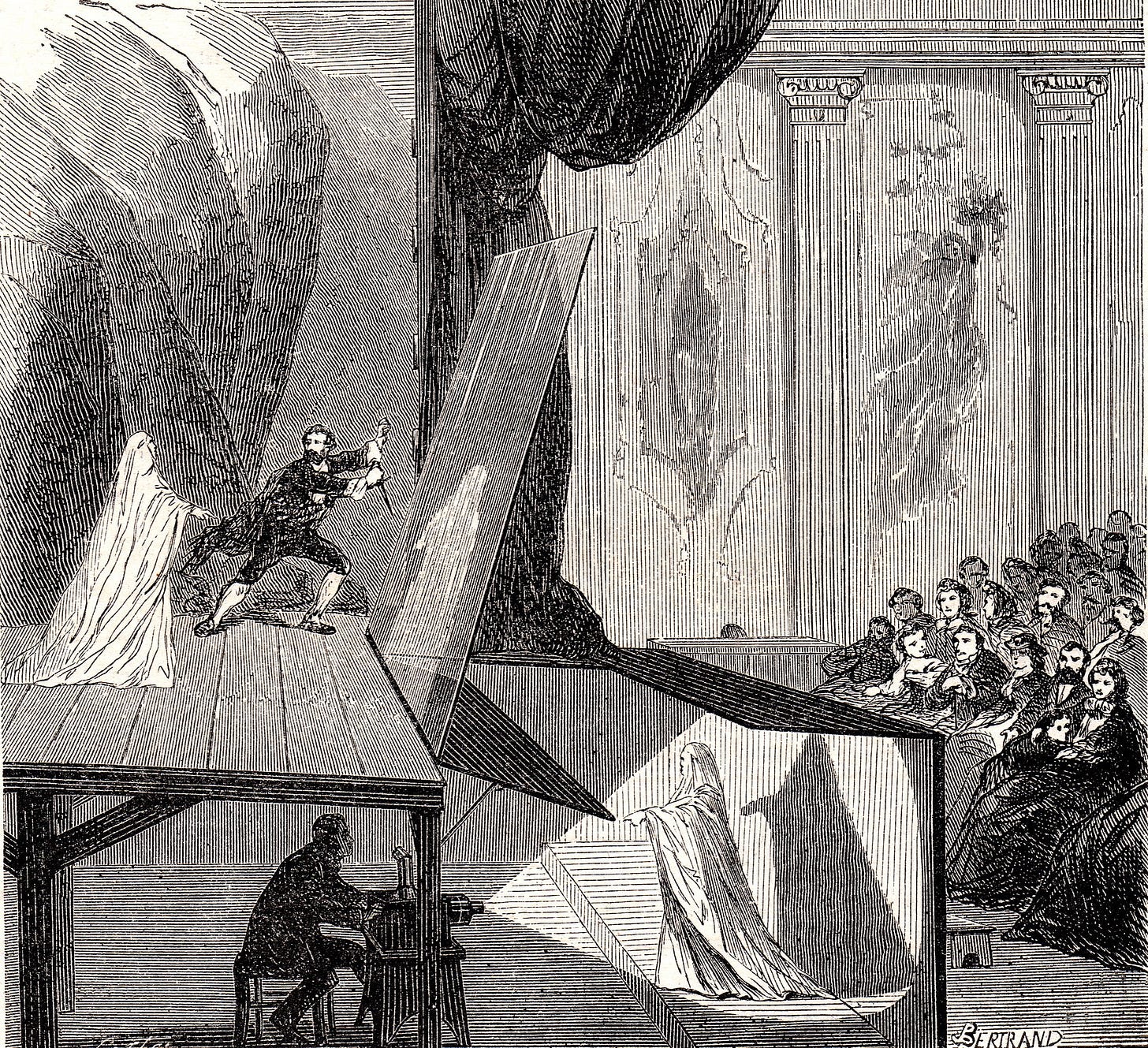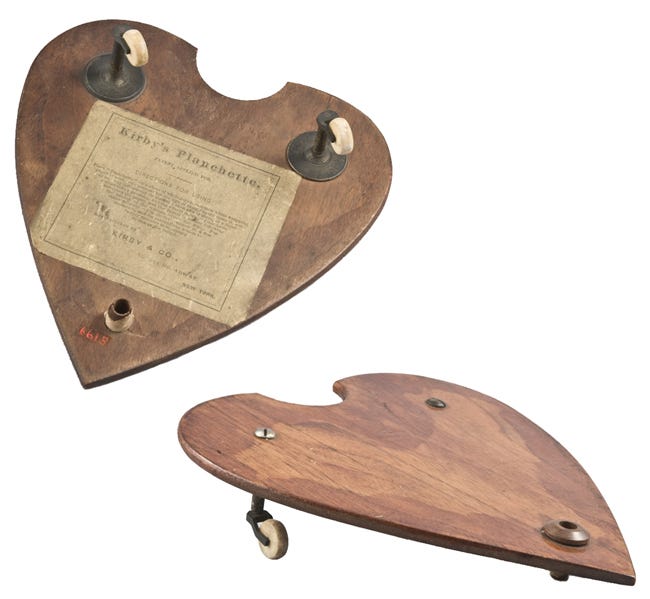With Halloween just past, Design Lobster #92 brings you some suitably ghostly tales. From a 19th century spiritual communication device to cutting edge technology that is bringing back deceased celebrities. Read on, if you dare… 🎃
✨And on a distinctly non-ghoulish note, this week I’m sharing some design job openings at my employer Monzo. If you’re a Product Designer, Brand Designer, Design Director/Manager or Researcher come and help build the bank of future with us! Don’t forget to mention Design Lobster if you apply…✨
Question: How might we bring pop stars back from the dead?

Next year I’ll be attending an ABBA concert in Stratford, London where the music will be performed by holographic versions of the band’s younger selves. Perplexed by the question of how this might work, I fell into a deep internet rabbit hole recently to learn the answer.
In fact most examples of this holographic technology are based on a 19th century illusion called Pepper’s Ghost. At the core of this is a tilted glass screen that allows a brightly lit actor beneath to be projected up onto the glass, thus seeming to appear on stage.
Contemporary versions of this illusion update the projection to a CGI version of the deceased star (normally just their face is mapped onto a recorded performance by a living actor). The end result is a surprisingly life-like illusion, though with some drawbacks that include the holographic performers only being able to walk side to side and a narrower range of seats that can be sold.
I’m fascinated by the ethical concerns these holograms pose. In 2019 a mooted Amy Winehouse concert using the technology was cancelled following criticism of the sensitivity of the idea, given the circumstances of Amy’s death. The ABBA concert I am attending sidesteps some of this controversy, the band members are of course still alive and all the motion capture for their projection has been done with them. Nevertheless their digital holograms will show them as fifty years younger, and I wonder if these eternally youthful avatars will ever stop performing!
Design takeaway: What illusions could you make use of in your design?
🔦 Watch the 2012 holographic TuPac performance that re-ignited interest in the technology.
Object: Planchette
These curious heart-shaped objects were at the centre of a mid-19th century craze in Europe and America for devices that allowed communication with the spirit world. Each planchette consisted of a thin wooden board with small plastic or bone rotatable wheels and a hole for a pen. The individual or group wishing to communicate would place their hand or hands upon the board and allow it to move at will underneath. It was believed that spirits present in the room could direct the motion to spell words and answer the questions put to them by those taking part in the séance.
Scientists nowadays attribute this so-called automatic writing to the ideomotor phenomenon – a concept that describes how bodily motion can occur without our conscious control, but in direct response to some external stimulus like a question.
By the 1890’s pen-holding planchettes were usurped by the Ouija board, which provided a surface of stencilled letters instead – making messages easier to read.
I find myself continually fascinated by the ways that human interest in the supernatural endures in spite (or perhaps because of) with our increasing technological sophistication. In Design Lobster #8 we looked at Co—Star, a horoscope app taking the Millenial world by storm. Whatever technology we will be using in fifty or one hundred years time, it seems likely we’ll still be using it to consult supernatural forces.
Design takeaway: How could your design draw on our fascination with the supernatural?
👻 Watch a séance using a planchette
Quote: “Feel the fear and do it anyway.”
– Susan Jeffers
Susan Jeffers is a self-help writer and motivational speaker, whose eponymous best-selling book exhorts readers to embrace action to overcome their fears. A helpful reminder for any of us seeking the courage at this spooky time of year to take their next step towards making their design real.
Have a great week,
Ben 🦞
Enjoyed this week’s Design Lobster? Let me know by clicking the heart button.
👇





